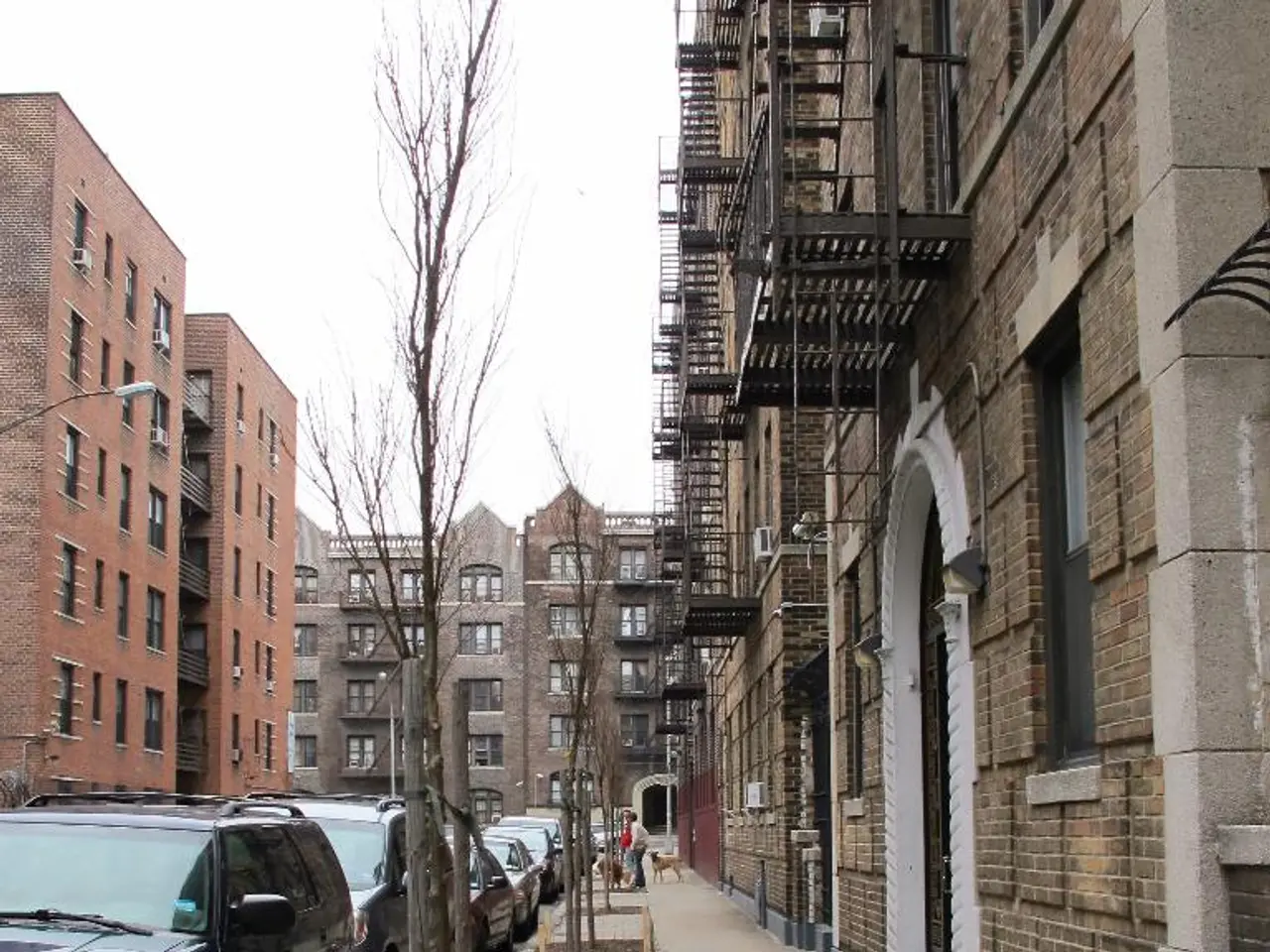Loan and deposit adjustments forthcoming: Nabiullina disclosed upcoming modifications in July
In a significant development, the Bank of Russia is considering a potential key rate lowering at its next meeting, signalling a potential shift towards a more accommodative monetary policy. This move comes as inflation is slowing down faster than expected, according to Governor Elvira Nabiullina.
The key rate, which is the rate at which the regulator lends to commercial banks and accepts their deposits, is the main tool the Bank of Russia uses to manage the cost of money in the domestic market. A reduction in the key rate could lead to cheaper loans, increased demand, and growth in money flow within the economy.
However, such a move would have implications for both individuals and businesses in Russia. Here's a breakdown of how a key rate reduction could impact different aspects:
| Aspect | Impact on Individuals | Impact on Businesses | |----------------------------|----------------------------------------------------|------------------------------------------------------| | **Borrowing costs** | Lower interest rates on loans and mortgages could make it easier for households to finance consumption and large purchases such as homes or cars. | Reduced credit costs could encourage business investments and expansion as financing becomes cheaper, improving cash flow and lowering expenses related to debt servicing. | | **Savings and investments**| Lower key rates often mean reduced returns on savings accounts and fixed-income investments, potentially decreasing income for savers. | Businesses may find bonds and other fixed-income investments less attractive, potentially shifting towards equity or growth investments. | | **Inflation dynamics** | Slower inflation reduces the cost of living pressure, preserving household purchasing power. A rate cut risks increasing inflation but the current outlook suggests manageable inflation. | Businesses benefit from stable or falling input costs, but increased demand from cheaper credit could raise prices if supply does not keep up. | | **Currency and exchange rates** | A rate cut might put downward pressure on the ruble, potentially increasing prices for imported goods, but it can also support economic competitiveness. | Exchange rate fluctuations affect companies with foreign currency debt or export/import businesses—cheaper borrowing could help offset risks. |
It's important to note that a rate cut, while aiming to sustain economic growth by reducing financing costs, must be balanced carefully to avoid reigniting inflationary pressures. The Bank of Russia's key rate was raised again due to an inflation surge and rapid credit growth during the summer-autumn of 2023.
For Russian citizens, a rate cut means cheaper loans but lower returns on deposits, as banks recalculate interest rates on loans and deposits. This potential impact on Russian citizens' finances includes the stimulation of business activity and economic growth recovery.
Analysts closely monitor the rhetoric of the Central Bank, as every word from the head of the regulator can influence the behavior of investors, banks, and ordinary consumers. Elvira Nabiullina emphasized that if the situation remains stable, the regulator will discuss not just the possibility of easing, but the specific amount of the rate cut.
The Bank of Russia's key rate was reduced to 20% in June 2022, marking the first decrease in nearly three years. This shift could stimulate lending by making loans cheaper, supporting economic growth and employment, although the positive effect may be uneven across economic sectors.
Sources: [1] Central Bank of Russia, Press Release, June 2022 [2] Central Bank of Russia, Speech by Governor Elvira Nabiullina, April 2023 [3] Financial Times, "Russia's Central Bank Cuts Key Rate," June 2022 [4] Bloomberg, "Russian Economy: Services Sector Struggles Amid Key Rate Hikes," September 2023 [5] Reuters, "Russia's Central Bank Signals Possible Key Rate Cut," May 2023
The reduction in the key rate could lead to cheaper loans for businesses, potentially encouraging investment and expansion, thus improving cash flow and lowering expenses related to debt servicing. Conversely, such a move might mean lower returns on savings accounts and fixed-income investments for individuals.




